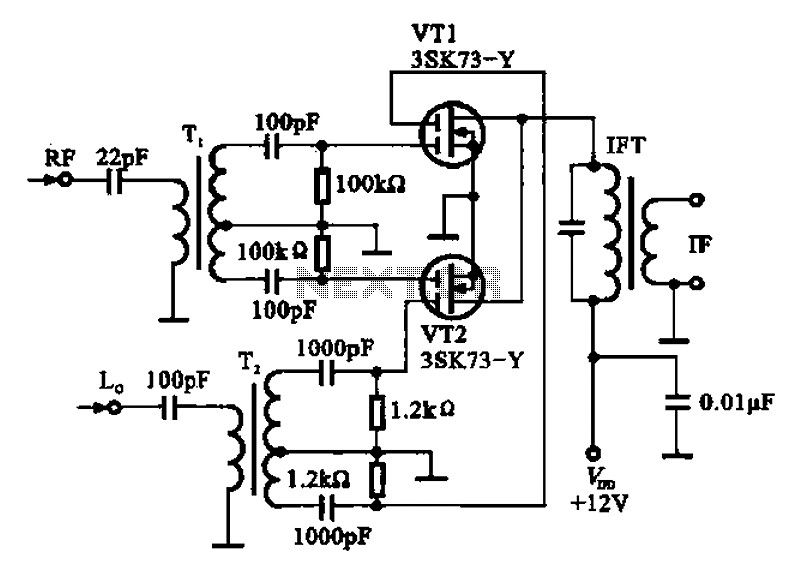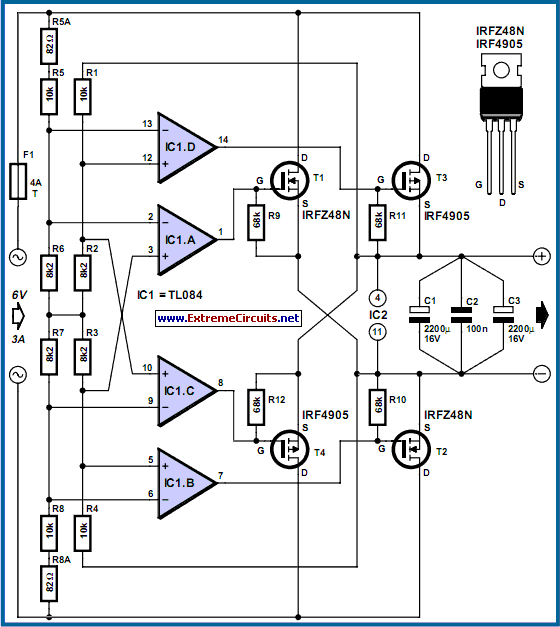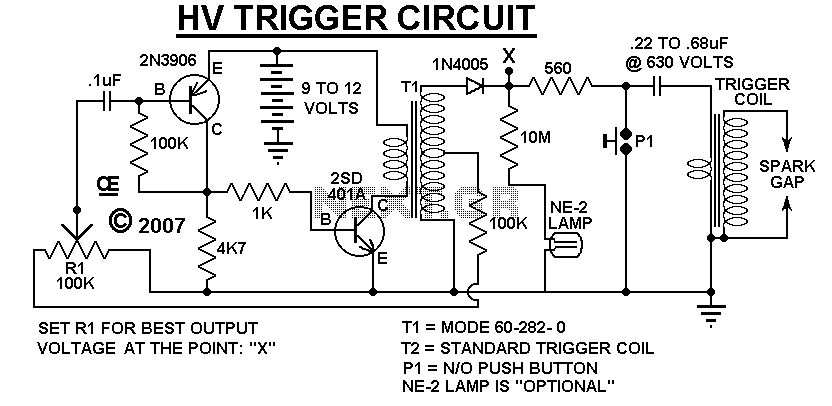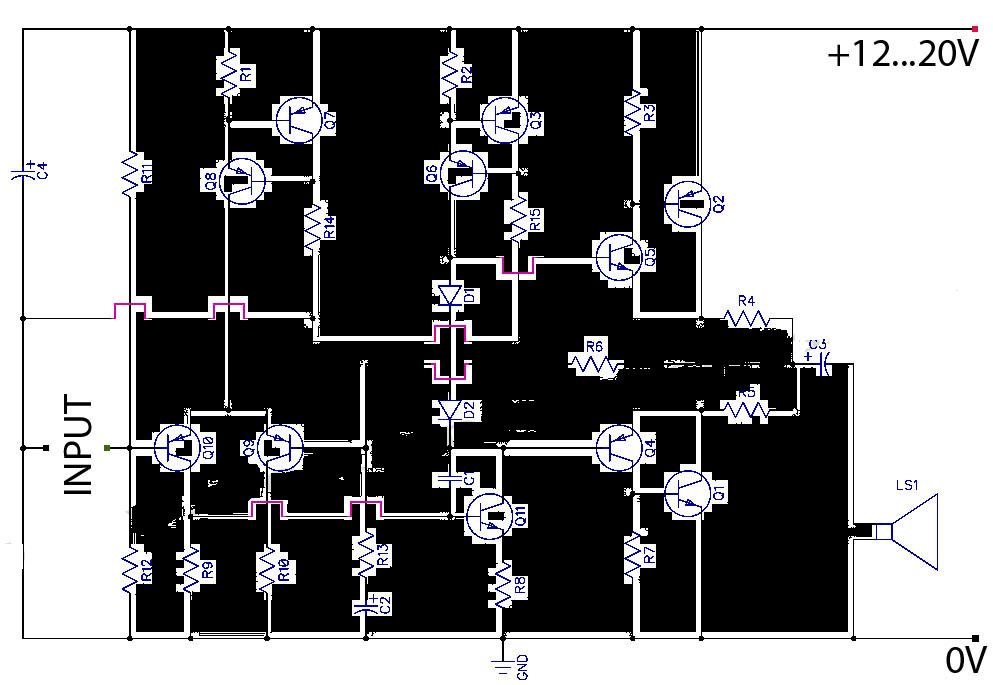
Dual Power Supply 15V
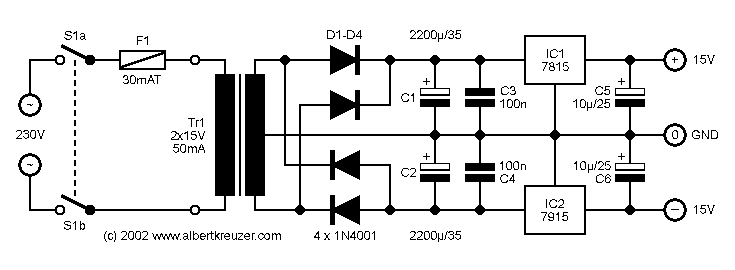
The 7915 (at least the "made in Morocco" I used) needs a small load (some mA) to work correctly. If you get funny voltages (-18.4V or so), put a resistor from the 7915 output to ground (2k2 works good). Or it might be a good idea to put the "power on" LED with a 1k5 resistor to the negative rail (take care of polarity!). More: Some brands of electrolytics have a small inductance which will cause the regulator ICs to oscillate. Use tantalum caps for C5/C6 to be sure (but also most normal electrolytics will work).
The 7915 voltage regulator is a linear voltage regulator designed to provide a stable -15V output. It is important to ensure that the device operates within its specified load conditions, as insufficient load can lead to unstable output voltages. Specifically, a minimum load current is required to maintain regulation; without it, the output could fluctuate, potentially resulting in unintended negative voltages, such as -18.4V.
To mitigate this issue, a resistor can be connected from the output of the 7915 to ground. A value of 2.2kΩ is suggested as it provides a small but adequate load to ensure proper operation. Additionally, integrating a power-on LED circuit can be beneficial. This LED should be connected to the negative rail with a series resistor of 1.5kΩ. Care must be taken to ensure the correct polarity when connecting the LED to avoid damage.
Capacitors play a crucial role in the stability of the voltage regulator. It has been noted that certain brands of electrolytic capacitors may possess a small inductance, which can lead to oscillation in the regulator ICs. To prevent this, it is advisable to use tantalum capacitors for the C5 and C6 positions in the circuit. Tantalum capacitors are less likely to induce oscillation due to their lower equivalent series resistance (ESR) and higher stability compared to standard electrolytic capacitors. However, most standard electrolytic capacitors may still function adequately, provided they are chosen carefully to meet the circuit's requirements.
In summary, ensuring a proper load on the 7915, using appropriate resistor values for LED indication, and selecting suitable capacitors are essential considerations for maintaining the stability and functionality of the voltage regulation circuit.The 7915 (at least the "made in Morocco" I used) needs a small load (some mA) to work correctly. If you get funny voltages (-18.4V or so), put a resistor from the 7915 output to ground (2k2 works good). Or it might be a good idea to put the "power on" LED with a 1k5 resistor to the negative rail (take care of polarity!).
Some brands of electrolytics have a small inductance which will cause the regulator ICs to oscillate. Use tantalum caps for C5/C6 to be sure (but also most normal electrolytics will work). 🔗 External reference
The 7915 voltage regulator is a linear voltage regulator designed to provide a stable -15V output. It is important to ensure that the device operates within its specified load conditions, as insufficient load can lead to unstable output voltages. Specifically, a minimum load current is required to maintain regulation; without it, the output could fluctuate, potentially resulting in unintended negative voltages, such as -18.4V.
To mitigate this issue, a resistor can be connected from the output of the 7915 to ground. A value of 2.2kΩ is suggested as it provides a small but adequate load to ensure proper operation. Additionally, integrating a power-on LED circuit can be beneficial. This LED should be connected to the negative rail with a series resistor of 1.5kΩ. Care must be taken to ensure the correct polarity when connecting the LED to avoid damage.
Capacitors play a crucial role in the stability of the voltage regulator. It has been noted that certain brands of electrolytic capacitors may possess a small inductance, which can lead to oscillation in the regulator ICs. To prevent this, it is advisable to use tantalum capacitors for the C5 and C6 positions in the circuit. Tantalum capacitors are less likely to induce oscillation due to their lower equivalent series resistance (ESR) and higher stability compared to standard electrolytic capacitors. However, most standard electrolytic capacitors may still function adequately, provided they are chosen carefully to meet the circuit's requirements.
In summary, ensuring a proper load on the 7915, using appropriate resistor values for LED indication, and selecting suitable capacitors are essential considerations for maintaining the stability and functionality of the voltage regulation circuit.The 7915 (at least the "made in Morocco" I used) needs a small load (some mA) to work correctly. If you get funny voltages (-18.4V or so), put a resistor from the 7915 output to ground (2k2 works good). Or it might be a good idea to put the "power on" LED with a 1k5 resistor to the negative rail (take care of polarity!).
Some brands of electrolytics have a small inductance which will cause the regulator ICs to oscillate. Use tantalum caps for C5/C6 to be sure (but also most normal electrolytics will work). 🔗 External reference

